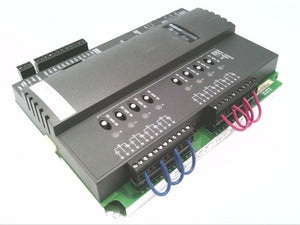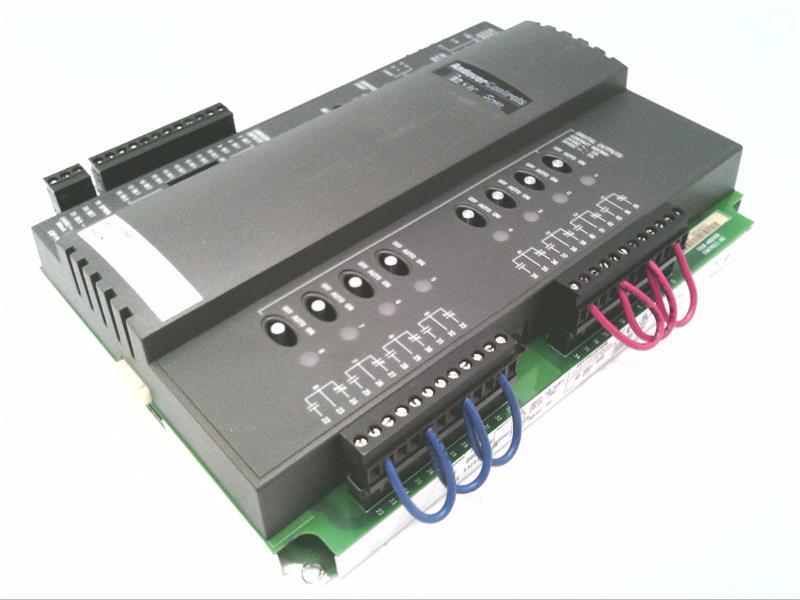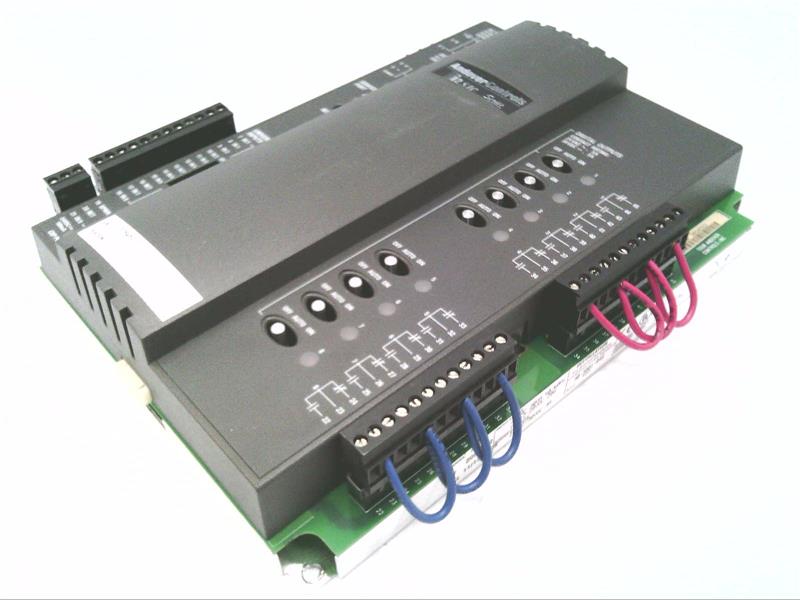

I2810 | Schneider Electric HVAC Control System Board
- Regular price
- $3,449.00
- Sale price
- $3,449.00
- Regular price
-
Couldn't load pickup availability
Do you need help?
Product Description P/N: I2810
Description
Part I2810 is an HVAC control system board, designed for precise management and regulation within HVAC systems. It supports integration into HVAC setups to enhance control and system efficiency.
Technical Specifications
|
Condition |
New/Never Used Surplus |
|
Category |
HVAC |
|
Subcategory |
HVAC Control System Board |
|
Type |
Zone Control |
|
Model |
Infinit II Controller |
|
Application |
HVAC Terminal |
|
Input Voltage (AC) |
24 VAC |
|
Input Voltage (DC) |
12-28 VDC |
Information About I2810
The I2810 is an HVAC control system board designed for advanced zone control in HVAC applications, featuring the Infinit II Controller model. This board enables precise management of heating, ventilation, and air conditioning functions within designated zones, optimizing comfort levels, energy efficiency, and system responsiveness. By regulating different zones individually, the I2810 enhances the ability of HVAC systems to adjust temperature, airflow, and humidity in specific areas based on demand, occupancy, and environmental changes, which is essential in both commercial and residential HVAC setups.
The I2810 is engineered as a terminal control unit, making it suitable for integration within various HVAC terminal setups where detailed zone management is needed. Its compatibility with a wide range of HVAC configurations allows it to serve effectively in settings where centralized control with distinct zone regulation is crucial, such as multi-floor office buildings, hospitals, educational institutions, and large residential complexes. The board’s functionality supports the scalability of HVAC systems, allowing seamless additions to existing infrastructures or flexible configurations in new installations.
For power input, the I2810 operates on a standard 24 VAC for alternating current or 12-28 VDC for direct current, making it adaptable to typical power sources in HVAC control systems. The dual-voltage compatibility simplifies installation within diverse power environments, offering flexibility for varied HVAC installations without requiring specialized power supplies. This adaptability ensures that the board can function reliably within the electrical specifications of most HVAC setups, reducing the need for additional power conversion components.
The Infinit II Controller model in the I2810 is designed for dependable performance and precise control, providing accurate, real-time adjustments to maintain desired environmental conditions across designated zones. By controlling parameters such as temperature, humidity, and fan speed, the controller supports targeted comfort levels in different areas. This control capability reduces the strain on the overall HVAC system by balancing the workload based on localized demand, ultimately contributing to energy savings and extended equipment life. This controller’s capabilities make it suitable for energy-conscious facilities seeking to maintain environmental comfort while minimizing energy consumption and operational costs.
Description
Part I2810 is an HVAC control system board, designed for precise management and regulation within HVAC systems. It supports integration into HVAC setups to enhance control and system efficiency.
Technical Specifications
|
Condition |
New/Never Used Surplus |
|
Category |
HVAC |
|
Subcategory |
HVAC Control System Board |
|
Type |
Zone Control |
|
Model |
Infinit II Controller |
|
Application |
HVAC Terminal |
|
Input Voltage (AC) |
24 VAC |
|
Input Voltage (DC) |
12-28 VDC |
Information About I2810
The I2810 is an HVAC control system board designed for advanced zone control in HVAC applications, featuring the Infinit II Controller model. This board enables precise management of heating, ventilation, and air conditioning functions within designated zones, optimizing comfort levels, energy efficiency, and system responsiveness. By regulating different zones individually, the I2810 enhances the ability of HVAC systems to adjust temperature, airflow, and humidity in specific areas based on demand, occupancy, and environmental changes, which is essential in both commercial and residential HVAC setups.
The I2810 is engineered as a terminal control unit, making it suitable for integration within various HVAC terminal setups where detailed zone management is needed. Its compatibility with a wide range of HVAC configurations allows it to serve effectively in settings where centralized control with distinct zone regulation is crucial, such as multi-floor office buildings, hospitals, educational institutions, and large residential complexes. The board’s functionality supports the scalability of HVAC systems, allowing seamless additions to existing infrastructures or flexible configurations in new installations.
For power input, the I2810 operates on a standard 24 VAC for alternating current or 12-28 VDC for direct current, making it adaptable to typical power sources in HVAC control systems. The dual-voltage compatibility simplifies installation within diverse power environments, offering flexibility for varied HVAC installations without requiring specialized power supplies. This adaptability ensures that the board can function reliably within the electrical specifications of most HVAC setups, reducing the need for additional power conversion components.
The Infinit II Controller model in the I2810 is designed for dependable performance and precise control, providing accurate, real-time adjustments to maintain desired environmental conditions across designated zones. By controlling parameters such as temperature, humidity, and fan speed, the controller supports targeted comfort levels in different areas. This control capability reduces the strain on the overall HVAC system by balancing the workload based on localized demand, ultimately contributing to energy savings and extended equipment life. This controller’s capabilities make it suitable for energy-conscious facilities seeking to maintain environmental comfort while minimizing energy consumption and operational costs.


